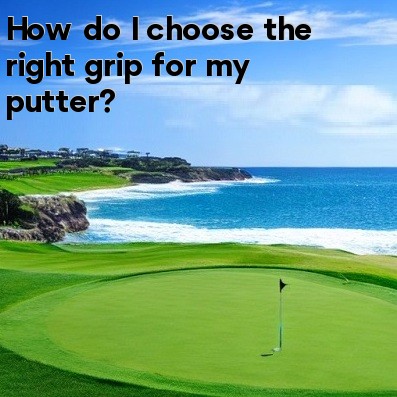
Choosing the Right Grip for Your Putter
When it comes to your putting game in golf, one of the most crucial factors to consider is your grip on the putter. The grip affects how the putter feels in your hands, how you control the clubface, and ultimately, how you roll the ball. Here are some important factors to consider when choosing the right grip for your putter.
- Grip Size: Grip size plays a significant role in the feel and control of your putter. There are generally three sizes to choose from – standard, midsize, and oversized. The right grip size for you depends on the size of your hand and personal preference. A grip that is too small can cause tension in the hands and lead to inconsistency, while a grip that is too big can limit your wrist action. Experiment with different sizes to find the one that feels most comfortable and allows for a smooth stroke.
- Grip Texture: The texture of the grip determines how much grip pressure you need to apply and how secure the putter feels in your hands. Grips come in various textures, ranging from smooth to rough. Some golfers prefer a smooth grip for a lighter touch and more feel, while others may prefer a rougher grip for a firmer hold. Consider your preference and the conditions you typically play in when choosing the texture.
- Grip Material: The material of the grip affects the overall feel and durability. Common grip materials include rubber, synthetic, and cord. Rubber grips are the most popular due to their comfort and affordability. Synthetic grips are known for their durability, while cord grips provide excellent traction in wet conditions. Test out different grip materials to find the one that feels the best and suits your playing style.
- Grip Design: The design of the grip refers to its shape and features. There are two common grip designs – pistol and oversized. Pistol grips have a flatter front and a taper towards the back, offering a comfortable option for those who prefer to place their hands together. Oversized grips, on the other hand, are thicker and often have a non-tapered profile, helping to minimize wrist movement and promote a more stable stroke. Consider which design complements your stroke style and addresses any specific issues you may have.
- Personal Feel: Ultimately, choosing the right grip for your putter comes down to personal feel. Don't be afraid to experiment with different grips to find the one that feels most comfortable and provides the best control. Take the time to try out different models at a golf store or ask for advice from a professional club fitter.
In conclusion, selecting the right grip for your putter in golf is crucial for optimal control and performance on the greens. Consider factors such as grip size, texture, material, and design when making your decision. Experiment with different options to find the grip that feels the most comfortable and suits your playing style. With the perfect grip, you'll be well on your way to sinking more putts and improving your golf scores. Happy putting!





